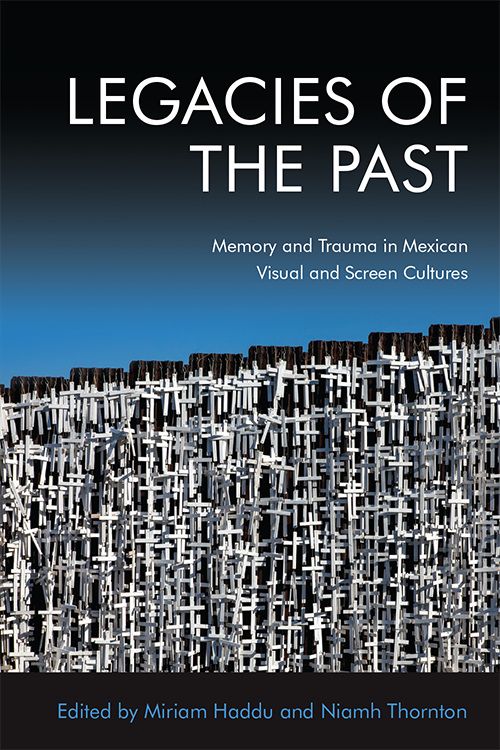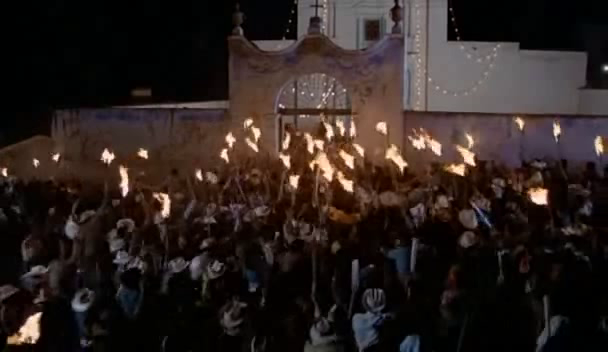
by Niamh Thornton
Niamh Thornton introduces the case studies she uses in her chapter from Legacies of the Past: Memory and Trauma in Mexican Visual and Screen Cultures.
Finding a space to discuss memory and trauma
In order to talk about memory and trauma, you have to find a moment and a case study (or several related ones) to focus your thinking. The problem is that both memory and trauma defy narrative and derail chronological thinking. More recent research also encourages us to think beyond boundaried locales (Bond et al 2016 and Bond 2018). Storytelling, spatio-temporal rules, and nation-space are all troubled and collapse when you think about memory and trauma. And yet, we get lost without something, somewhere and sometime on which to hang our thinking.
As a specialist in Mexican culture, this is the culture I consider and the place I am bounded by to think through these issues. There are particularities to this focus, historical factors that need to be attended to and production contexts that I have had to be mindful of when writing. But, there are also wider areas of thinking and theoretical approaches that inform our way into this singular place.
The work I consider prompts more questions than answers and I keep circling back around on a definition of what perpetrator footage is. All three films I discuss in my chapter: Los de abajo/The Underdogs (Servando González, 1976), Los Poquianchis (Felipe Cazals, 1976) and Canoa (Felipe Cazals, 1976) were all released in the same year. Of the three films, Canoa is the one that clearly uses footage shot to document violence enacted by those in control of the camera, Los Poquianchis draws on found footage and attempts to critique news media obsession with extreme acts of violence, and Los de abajo is a reflection by a director on his implication with perpetrator filmmaking.
Memory and trauma in Los de abajo
Los de abajo is set during the Mexican Revolution, but it has been my contention that it’s really about the director’s troubled relationship and compromised decisions related to the workers and student protests and then massacre in Mexico City in 1968. Midway through what is an arthouse war film, he pauses the action of this fiction feature to show found footage of the corpses of people and animals from the Mexican Revolution. These are edited in a way that foregrounds their different sources. The shots do not match, the cameras move in different directions, the cuts are hard. He accompanies it with a slowed-down version of the normally lively corrido, ‘Si Adelita se fuera con otro’ [If Adelita were to go with another].
This director was someone who was out of favour because of his decision to work for the government at a time when his contemporaries allied themselves with the students and workers. And yet, the footage makes for a powerful statement against violence and warfare.
Felipe Cazals and Found Footage
Los Poquianchis is an intervention into a story about the mass murder of sex workers and an attempt to counter the salacious tabloid coverage of their deaths. A novel, Las muertas, by the crime novelist and satirist Jorge Ibargüengoitia published in the same year was from a perpetrator’s point of view (see, Wolfenzon 2016). The use of found footage in Los Poquianchis is as a commentary on the political situation where the fictional elements focus on the women’s stories. In a film about women’s murders, the social conditions of the rural male labour force are foregrounded through footage of rallies in town squares and bureaucratic queues for aid.
Canoa is the story of the lynching of young university workers mistaken for students in a Mexican village in 1968. Guillermo del Toro described it as “a political horror masterpiece” and “a truly great, brutal, precise piece of filmmaking” (2017). In its pre-credit sequence Cazals uses footage directed by the army of unnamed men who have been assaulted. The camera-person is clearly compromised in their filming, which is a commentary on and a sign of complicity with the violence that follows. That Canoa was criticised for making the villagers and not the army culpable for the violence further complicates any celebratory reading of the film and the footage it uses.
![Felipe Cazals' star on Paseo de las Estrellas on Paseo Constitución in Victoria de Durango, Mexico [Photo via Wikimedia Commons]](https://euppublishingblog.com/wp-content/uploads/2021/07/Felipe-Cazals-star-on-Paseo-de-las-Estrellas-on-Paseo-Constitucion-in-Victoria-de-Durango-Mexico-1024x685.jpg)
Both Los Poquianchis and Canoa are made by a highly venerated director, Felipe Cazals, whose place in the cultural firmament is solid, unlike his contemporary, Servando Gonzalo. Two questions I keep reflecting on are: 1. Should Gonzalo’s work be forgotten because of his controversial decision to work on behalf of the government? 2. How do we assess found footage that is employed as commentary when it is sometimes ambiguously that of the perpetrator?
Much of the challenge in discussing the audio-visual images used by these directors is that the found footage used does not always convey what Avery F. Gordon (2008) called “complex personhood” whose lives Judith Butler has described as being grievable. That is, a measure of whether they fit within a recognisable frame of reference and have lives that we can apprehend. My key concern in examining these films has been: should lives be presented – such as they often are by news media -as instances of violence that merely fit with prior understanding of them as reduced to otherness and object or can violent death and assault be merely reproducible to advance an argument or for creative expression?
Bibliography
Bond, Emma (2018), Writing Migration Through the Body, London: Palgrave MacMillan
Bond, Lucy, Stef Craps, and Pieter Vermeulen (2016), ‘Introduction: Memory on the Move’, in Lucy Bond, Stef Craps, and PieterVermeulen (eds), Memory Unbound: Tracing the Dynamics of Memory Studies, New York & Oxford: Berghan Books, pp. 1–26.
Butler, Judith (2009), Frames of War: When Life is Greivable, Calcutta: Seagull Books.
Gordon, Avery F. (2008), Ghostly Matters: Haunting and the Sociological Imagination, Minneapolis & London: University of Minnesota Press.
Wolfenzon, Carolyn (2016), ‘Las muertas y los relámpagos de agosto: la violencia como esencia de lo mexicano en la obra de Jorge Ibargüengoitia’, Bulletin of Spanish Studies, 93:5: pp. 859–75.
About the Author

Niamh Thornton is Reader in Latin American Studies at the University of Liverpool. She is a specialist in Mexican Film, Literature, and Digital Cultures with a particular focus on War Stories, Gendered Narratives, Star Studies, Cultures of Taste, and Distributed Content. Her key research interest is in the multiple representations of conflict in literature and film. She has published extensively, recently co-editing with Miriam Haddu Legacies of the Past: Memory and Trauma in Mexican Visual and Screen Cultures (EUP, 2020).
Liked this post? Read another by Niamh Thornton where she explores the changing role of the victim in discussions of violence: Centering the Victim.





